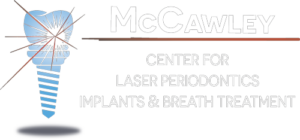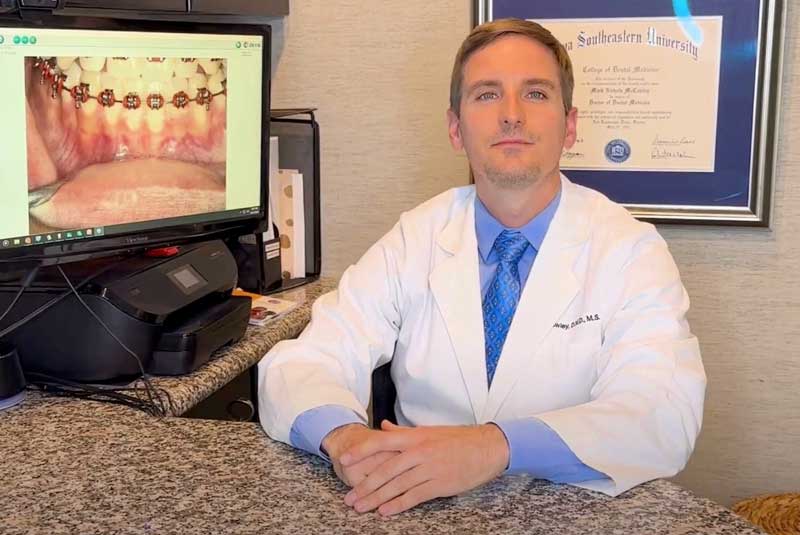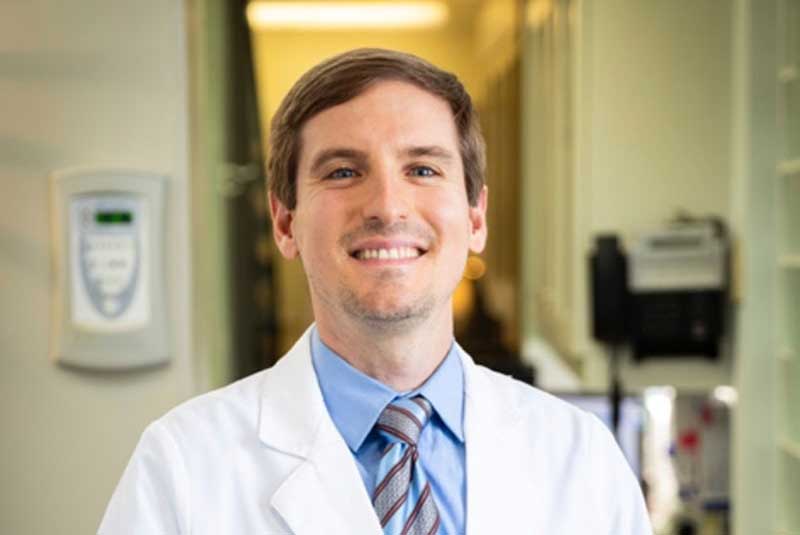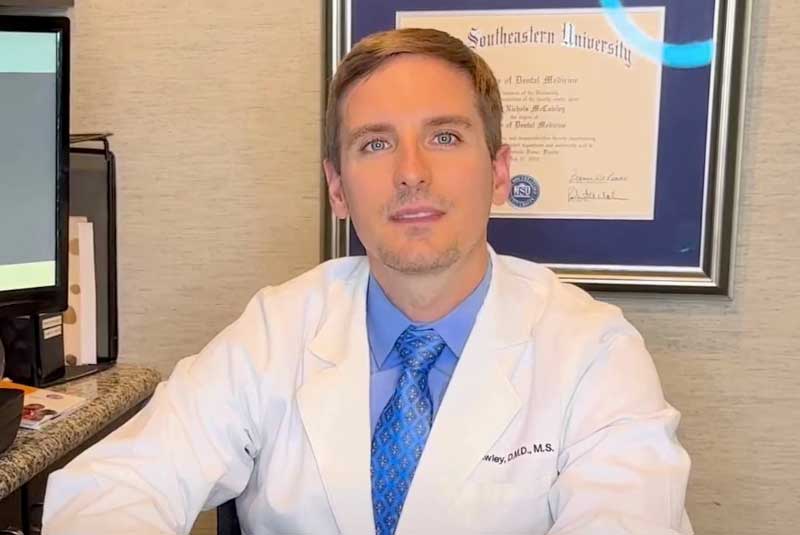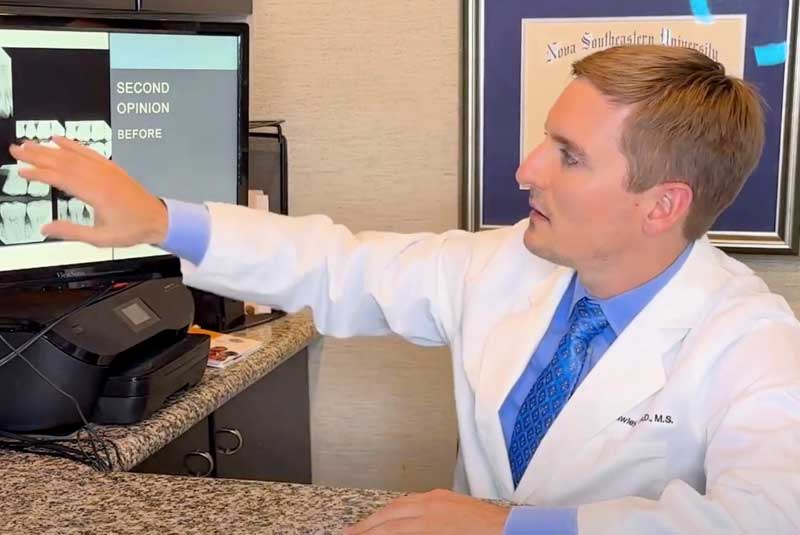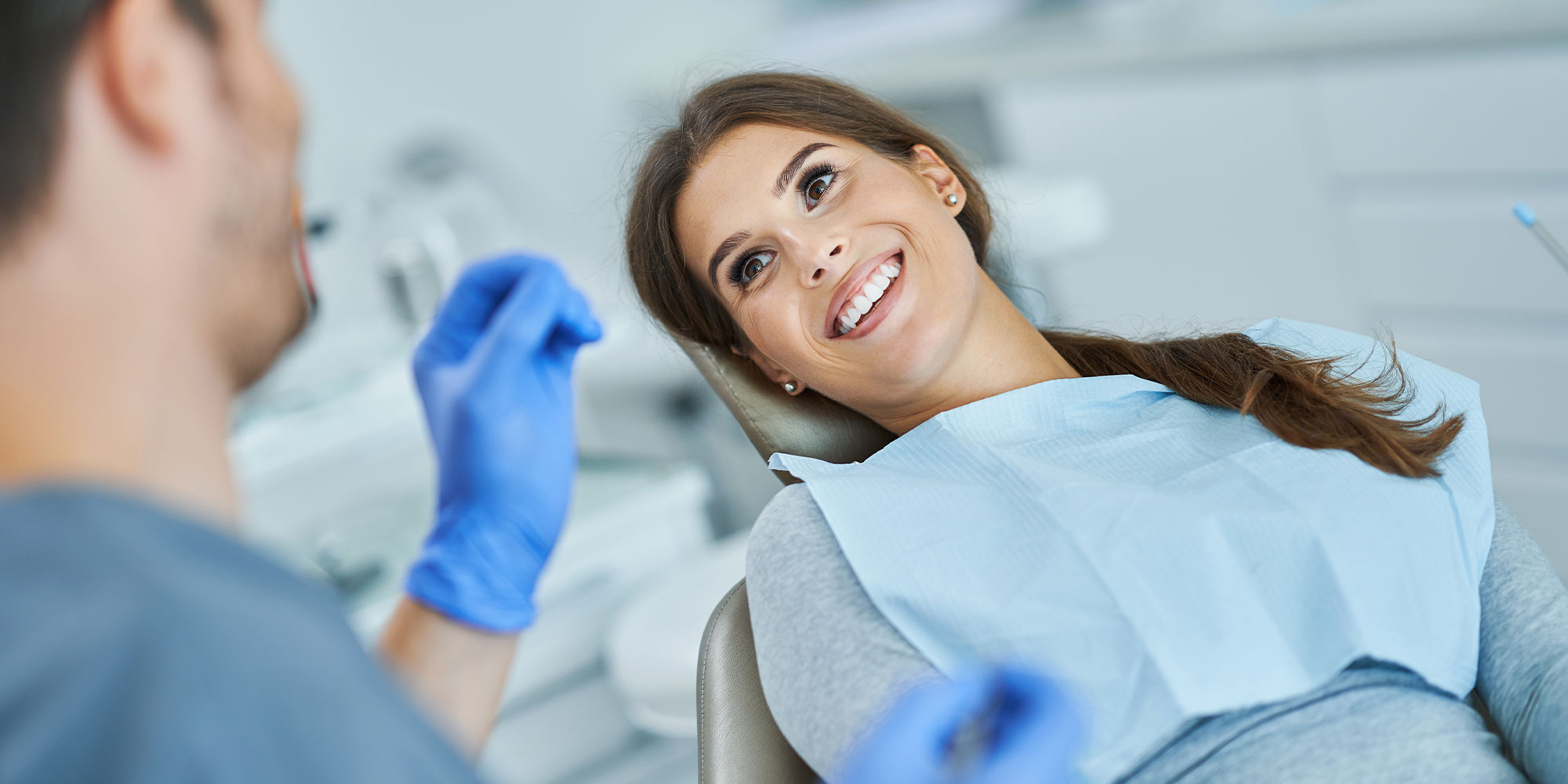
Since 90% of gum disease occurs between the teeth, cleaning between the teeth with floss, proxabrushes or some other tool is most important and should be done first. For most people, we recommend The FBI. Tongue clean first, then floss, then brush, then irrigate. Cleaning between the teeth once per day is sufficient. Because the bad bacteria takes several days to regrow, even twice per week is very helpful. It is also a myth that oral irrigation is an alternative to flossing or other inter dental cleaners. They are helpful after flossing and brushing but, on their own, will not sufficiently remove the bacterial plaque that form a biofilm that is mostly impervious to irrigation or rinsing.
Although dental implants have demonstrated a very high survival rate, one recent study followed 2300 implants for 10 years and found that severe periodontal disease caused eight times the risk of implant failure. Multiple recent studies have shown that gum infection of implants (peri-implantitis) is caused by the same bacteria that cause gingivitis and periodontitis. To avoid cross bacterial infection of implants, it is critical to manage periodontal infection throughout the mouth prior to starting implant therapy to prevent the implants from getting infected. Once infection and bone loss starts, treatment of ailing and failing implants is challenging. We have found the best treatment is to use the Nd:YAG laser with the LAPIP® technique. In many cases, we have been able to stop the infection and in some cases regenerate the bone.
On the contrary, certain types of lasers are extremely effective. The Nd:YAG wavelength that we use has had two large histological studies and several clinical studies that have shown it to be remarkably effective in producing new bone and new attachment to the root. No other periodontal treatment has been able to show this healing of the pockets from the bottom up. We use this routinely to treat periodontal disease and seldom use the old cutting and stitching. We had the first Nd:YAG laser in the country 22 years ago and our office has treated over 5000 patients with laser treatment making us likely the most experienced laser users for periodontal treatment in the world.
Pockets are the result of a bacterial infection. The focus needs to be on getting rid of the cause of the pockets, bacterial infection and then controlling reinfection. In our office often this includes culturing to identify the specific bacteria and using the indicated antibiotics to help eliminate or reduce those bacteria. In addition, we use the laser, irrigation with antiseptics, probiotics and improved mechanical plaque control. We also try to help control other risk factors which often contribute to periodontal destruction such as smoking, diabetes and excessive biting forces.
With PPO plans, you are able to see any periodontist. When you go to an “out of network” provider (someone not on your list), your PPO plan will still cover a portion of your dental fees. Many times we find that your “in network” total expenses are similar to the fees that we charge. We are happy to assist you with your insurance benefits and answer any questions you may have.
Hardly ever. It usually comes from bacteria located on the very back of the tongue and between the teeth. Using a tongue cleaner on the back of the tongue with multiple strokes will help control most bad breath. It’s also important to avoid onions and garlic in your food.
Bleeding gums always indicates disease and needs treatment because it may lead to more severe gum disease. Often it can be as simple as better oral hygiene and more frequent maintenance but sometimes it may need more involved treatment.
Actually, Florida is one of 45 states that allow hygienists who have been trained and certified to administer local anesthesia to patients. We are fortunate to have four hygienists in our office that are qualified and skilled to give local anesthesia to ensure your visits are pain free.
Recently there have been several stories in the media implying that dental x-rays are dangerous. According to the American Society of Radiologic Technicians web site, “Dental x-rays are one of the lowest radiation dose studies performed. A routine exam which includes 4 bitewings is about 5 microsieverts, which is less than one day of natural background radiation. It is also about the same amount of radiation exposure from a short airplane flight (~1-2 hrs).” To put this in perspective, a medical cardiac CT scan has 16,000 microsieverts of radiation while a full set of 18 digital dental films like we use in our office produces only four microsieverts of radiation and our dental CT scan has only about 80 microsieverts.
The body of evidence that periodontal disease may increase the risk of heart attack and stroke as well as a host of other systemic diseases has been growing for the past 15 years. The American Heart Association recently released a press release emphasizing that “studies have found an association between periodontal disease and atherosclerotic vascular diseases that cannot be explained by other risk factors such as smoking, high cholesterol, etc.” A new large Swedish study strengthens that evidence. Nearly 8000 patients with periodontal disease were evaluated. Those with a higher number of deep pockets had a 53 per cent increased risk of heart attack. Those with the highest incidence of bleeding gums had more than twice the risk of stroke.
Measure the pockets and then identify the bacterial and parasitic cause and modifying factors, such as smoking, diabetes or your bite.
Reduce the pockets and eliminate the bacterial and protozoal cause with lasers, antibiotics and antiseptics, and adjust the bite force.
Avoid recurrence of the infection with good plaque control and regular professional maintenance.
It is a serious bacterial infection that will cause the loss of your teeth and implants.
It will affect your health. It has been linked to 42 diseases, including a 28% increase in heart attacks, and an increase in the risk of Alzheimer’s Disease.
It is a leading cause of bad breath and the bacterial infection can be transmitted to significant others and your children and grandchildren.
Our office pioneered treating the bacterial cause of periodontal disease, which greatly to prevent the recurrence of the disease.
Experience: Lectures to graduate periodontal students at NOVA Southeastern University College of Dental Medicine, and internationally. Has evaluated more than 200,000 microscopic bacterial samples, more than any other periodontal practice in the world.
Our office had the first periodontal laser in the country to treat periodontal disease more comfortably without cutting and stitching surgery, and which promotes faster healing.
Experience: We have completed more than 5,000 successful laser periodontal procedures making us the most experienced laser surgeons in the world. We have five published studies on the laser and have lectured internationally on our laser results.
If anxious, we can sedate you with oral or intravenous sedation. If intravenous, we use the revolutionary infrared VeinViewer, which makes venipuncture much more reliable.
Experience: We have completed more than 4,000 procedures with the latest monitoring equipment to ensure your safety.
Our office had the first periodontal laser in the country to treat periodontal disease more comfortably without cutting and stitching surgery, and which promotes faster healing. We have completed more than 5,000 successful laser periodontal procedures making us the most experienced laser surgeons in the world.
We published the groundbreaking study that proved the laser killed the bacteria in nine out of ten cases, decreasing the recurrence of the infection. In contrast, cutting and stitching surgery have never been shown to remove the bacteria.
We have five published studies on the laser more than almost anyone in the world and have lectured internationally on our laser results.
We were the first practice in South Florida to use the Navident computerguided implant system that ensures more accurate and safer placement of your implants. This is the same technology used in neurosurgery. We use only the best, most-researched implants, not generic knockoffs, which increase the predictability of the procedure.We use the latest 3D cone beam radiography to help us plan the placementaccurately. We founded the South Florida Dental Implant Group, a collaborative team to provide the best restorative care to restore your implants.Experience: Dr. Mark McCawley has three years of graduate training in placing implants after dental school, not a weekend course.
He has placed hundreds of implants successfully.
He is board certified in dental implant surgery by the American Board of Periodontology.
He has lectured at national and international meetings on treating ailing and failing implants.
We use cone beam scanning computer technology (CBCT) to place implants.
We use the Navident computer guided implant placement system to precisely place the implants.
We work with best restorative dentists to restore your chewing ability.
